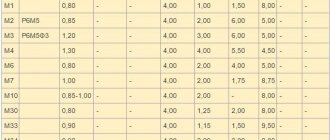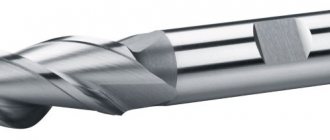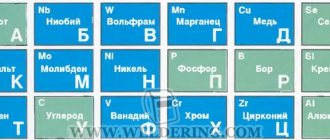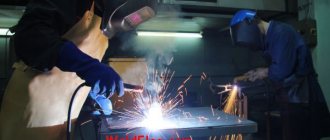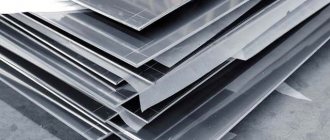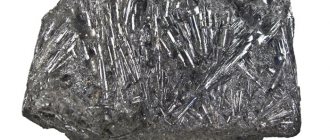Classification by chemical composition
The main alloying additives are metals.
By varying the quantitative composition of additives and their mass fraction, a wide variety of steel grades are obtained. Pure iron itself has low technical properties. Low mechanical strength and high susceptibility to corrosion require the introduction of additional substances into the alloy composition, which are aimed at improving one of the qualities, or several at once. Often, the improvement of some characteristics entails the deterioration of others. Thus, high-alloy stainless steels may have low mechanical strength, while high-quality carbon steels, along with high strength, receive weakened corrosion properties.
As mentioned above, one of the classifications of steel grades is its chemical composition. The main components of all steels without exception are iron and carbon, the content of which should not exceed 2.14%. Depending on the amount and proportions of additives, the iron content in the composition should be at least 50%.
Based on the amount of carbon contained, steels are classified into three groups:
- Low-carbon – carbon content less than 0.25%;
- Medium carbon – 0.25-0.6% carbon;
- High carbon, with a carbon content of more than 0.6%.
An increase in the percentage of carbon increases the hardness of the metal, but at the same time its strength decreases.
To improve performance, a certain amount of chemical elements is introduced into the alloy. Such steels are called alloyed. For alloy steels there is also a division into three groups:
- Low alloy, containing additives up to 2.5%;
- Medium alloyed, which contain from 2.5 to 10% alloying elements;
- Highly alloyed. The content of alloying impurities varies from 10 to 50%.
The marking of steels reflects the presence and percentage of alloying additives. When deciphered, each element is assigned a specific letter, next to which there is a number corresponding to its content as a percentage. The absence of numbers indicates that the additive is present in the alloy in an amount of less than 1-1.5%. The presence of carbon in the composition is not reflected, since it is included in all compositions, but its content is indicated at the very beginning of the labeling.
The marking can also indicate the purpose of the alloy. Since this classification also uses letter designations, the order of their arrangement is regulated - at the beginning, middle and end of the marking.
Designation of steels with alloying elements
As mentioned above, the classification of steels with alloying elements includes several categories. The marking of alloy steels is compiled according to certain rules, knowledge of which allows one to quite simply determine the category of a particular alloy and the main area of its application. In the initial part of the names of such brands there are numbers (two or one) indicating the carbon content. Two numbers indicate its average content in the alloy in hundredths of a percent, and one – in tenths. There are also steels that do not have numbers at the beginning of the brand name. This means that the carbon content in these alloys is within 1%.
Example of alloy steel marking
The letters that can be seen behind the first digits of the brand name indicate what the alloy is made of. The letters that give information about a particular element in its composition may or may not be followed by numbers. If there is a number, then it determines (in whole percentages) the average content of the element indicated by the letter in the alloy, and if there is no number, it means that this element is contained in the range from 1 to 1.5%.
At the end of the marking of certain types of steel there may be the letter “A”. This suggests that this is high quality steel. These grades may include carbon steels and alloys with alloying additives in their composition. According to the classification, this category of steels includes those in which sulfur and phosphorus amount to no more than 0.03%.
Carbon steel of ordinary quality
They are among the cheapest and most widely used. From them, up to 70% of all rolled products are obtained - hot-rolled, long- and shaped thick- and thin-sheet, wide-rolled and cold-rolled thin-sheet. These steels are used to make pipes, forgings, stampings, tape, wire, metal products (hardware): nails, ropes, mesh, bolts, nuts, rivets, as well as light and medium-loaded parts; pins, washers, keys, covers, casings, and from steel numbers 4-6 - shafts, screws, gears and spindles. Ordinary quality steels weld well.
Depending on the purpose, carbon steels of ordinary quality are divided (GOST 380-94) into three groups: A – supplied by mechanical properties, B – supplied by chemical composition and C – supplied by mechanical properties and chemical composition. Depending on the standardized indicators (strength characteristics, chemical composition), the steel of each group is divided into group A - 1, 2 and 3; group B – 1st, 2nd; group B – 1, 2, 3, 4, 5, 6th.
The letters St mean “steel”, the numbers from 0 to 6 are the conventional brand number characterizing the mechanical properties of the steel. As the grade number increases, the tensile strength σв and the yield strength σт increase and the relative elongation δ decreases. To indicate the degree of deoxidation, indices are placed after the brand number: kp - boiling, ps - semi-calm, sp - calm (for example: StZkp, StZps, StZsp; Tables 8 and 9).
The mechanical properties of carbon steel of ordinary quality of group A and the approximate purpose of carbon steel of ordinary quality are given in table. 8
Table 8. Carbon steels, their mechanical properties and purpose
| steel grade | Properties | Approximate purpose | ||
| σв, MPa | σt, MPa | δ, % | ||
| St0 | No less 300 | – | 23 | Irrelevant building structures, gaskets, washers, casings. Weldability is good |
| St1kp St1ps, St1sp | 300-390 310-410 | – – | 35 | Lightly loaded parts of metal structures - rivets, washers, cotter pins, gaskets, casings. Weldability is good |
| St2kp St2ps, St2sp | 320-410 330-430 | 215 225 | 33 | Parts of metal structures - frames, axles, keys, rollers, cemented parts. Weldability is good |
| StZkp StZps, StZsp StZGps StZGsp | 360-460 370-480 370-490 390-570 | 235 245 245 – | 27 – | Trolley frames, cemented and cyanidated parts that require high surface hardness and low core strength, crane hooks, rings, cylinders, connecting rods, covers |
| St4kp St4ps, St4sp | 400-510 410-530 | 255 265 | 25 | Shafts, axles, rods, pins, hooks, bolts, nuts, parts with low strength requirements |
| St5ps, St5sp St5Gps | 490-630 540-590 | 285 285 | 20 | Shafts, axles, sprockets, fasteners, gears, connecting rods, parts with increased strength requirements |
| St6ps St6sp | No less 590 | 315 315 | 15 | Shafts, axles, hammer heads, spindles, cam and friction clutches, chains, high-strength parts |
To be able to recognize steel grades during storage, rolled products are marked with indelible paint. To do this, regardless of the group and degree of deoxidation of the steel, use paint of the colors indicated in the table. 9.
Table 9. Marking color of ordinary quality carbon steel
| steel grade | Marking color | steel grade | Marking color |
| St0 | Red and green | StZGps | Red and blue |
| St1 | White and black | St4 | Black |
| St1Gps | White and red | St4Gps | Black and red |
| St2 | Yellow | St5 | Green |
| St2Gps | Yellow and red | St6Gps | Green and white |
| St3 | Red | St6 | Blue |
KS alloyed
According to state standard 4543-71, the name of steels consists of letters and numbers. The initial numbers indicate the average carbon concentration in hundredths of a percent. The letters indicate the components for alloying. The numbers behind the letter indicate the concentration of the chemical component, which is rounded to the nearest whole number; if the concentration of the doping component is no more than 1.5 percent, the number behind the letter is not written.
An example would be the decoding of steel grade 13X: KS with a carbon concentration of 0.09 and no more than 0.15 percent, chrome - with 0.4 and no more than 0.7 percent.
KS with carbon concentration from 0.27 and not more than 0.34 percent, chromium from 2.3 and not more than 2.7 percent, molybdenum from 0.2 and not more than 0.3 percent, vanadium from 0.06 and not more 0.12 percent is called 30X3MF.
In order to indicate the presence of sulfur and phosphorus (S no more than 0.03 percent, P no more than 0.03 percent), as well as the fact that the steel is high-quality, the letter “A” is written at the end of its name.
Particularly high-quality KS, which has undergone electroslag remelting (as a result of which purification from oxides and sulfides occurs), is marked by adding the letter “Ш” with a dash at the end of the name. Example: 12Х2Н4А, 15Х2МА, 20ХГНТР-Ш.
How to decipher steel markings?
To make deciphering the designations of different types of steels easy, you should know well what they are. Certain categories of steel have special markings. They are usually designated by certain letters, which allows you to immediately understand both the purpose of the metal in question and its approximate composition. Let's look at some of these brands and understand their designation.
Properties and purpose of structural alloy steels
Structural steels specially intended for the manufacture of bearings can be recognized by the letter “Ш”; this letter is placed at the very beginning of their marking. After it in the brand name there is a letter designation of the corresponding alloying additives, as well as numbers by which the quantitative content of these additives is determined. Thus, steel grades ShKh4 and ShKh15, in addition to iron and carbon, contain chromium in amounts of 0.4 and 1.5%, respectively.
The letter “K”, which appears after the first digits in the brand name, indicating the quantitative carbon content, denotes structural non-alloy steels used for the production of vessels and steam boilers operating under high pressure (20K, 22K, etc.).
High-quality alloy steels, which have improved casting properties, can be recognized by the letter “L” at the very end of the marking (35ХМЛ, 40ХЛ, etc.).
Deciphering the grades of construction steel can cause some difficulty if you do not know the specifics of the markings. Alloys of this category are designated by the letter “C”, which is placed at the very beginning. The numbers following it indicate the minimum yield strength. These brands also use additional letter designations:
- letter T – heat-strengthened rolled products;
- letter K – steel, characterized by increased corrosion resistance;
- letter D is an alloy characterized by a high copper content (S345T, S390K, etc.).
Unalloyed steels belonging to the tool category are designated by the letter “U”; it is affixed at the beginning of their marking. The number following this letter expresses the quantitative carbon content in the alloy in question. Steels of this category can be high-quality and high-quality (they can be identified by the letter “A”, it is placed at the end of the brand name). Their marking may contain the letter “G”, which means a high content of manganese (U7, U8, U8A, U8GA, etc.).
, containing alloying elements in their composition, are marked similarly to alloyed structural ones (KhVG, 9KhVG, etc.).
Composition of alloy tool steels (%)
The marking of those steels that are included in the high-speed cutting category begins with the letter “P”, followed by numbers indicating the quantitative content of tungsten. Otherwise, brands of such alloys are named according to the standard principle: letters denoting the element, and, accordingly, numbers reflecting its quantitative content. The designation of such steels does not indicate chromium, since its standard content in them is about 4%, as well as carbon, the amount of which is proportional to the vanadium content. If the amount of vanadium exceeds 2.5%, then its letter designation and quantitative content are affixed at the very end of the marking (З9, Р18, Р6М5Ф3, etc.).
The influence of some additives on the properties of steel
Unalloyed steels belonging to the electrical category are marked in a special way (they are also often called pure technical iron). The low electrical resistance of such metals is ensured due to the fact that their composition is characterized by a minimum carbon content - less than 0.04%. There are no letters in the designation of grades of such steels, only numbers: 10880, 20880, etc. The first digit indicates the classification by type of processing: hot-rolled or forged - 1, calibrated - 2. The second digit is associated with the category of the aging coefficient: 0 - non-standardized, 1 - normalized The third digit indicates the group to which this steel belongs according to the standardized characteristic taken as the main one. The value of the standardized characteristic itself is determined from the fourth and fifth digits.
The principles by which the designation of steel alloys is carried out were developed back in the Soviet period, but to this day they are successfully used not only in Russia, but also in the CIS countries. Having information about a particular grade of steel, you can not only determine its chemical composition, but also effectively select metals with the required characteristics.
Types of steels and features of their markings
Steel is an alloy of iron and carbon, the content of which is no more than 2.14%. Carbon gives the alloy hardness, but if it is in excess, the metal becomes too brittle.
One of the most important parameters by which steels are divided into different classes is the chemical composition. Among the steels according to this criterion, alloyed and carbon steels are distinguished, the latter are divided into low-carbon (carbon up to 0.25%), medium-carbon (0.25–0.6%) and high-carbon (they contain more than 0.6% carbon).
Types of steels
By including alloying elements in the steel, it can be given the required characteristics. It is in this way that, by combining the type and quantitative content of additives, grades with improved mechanical properties, corrosion resistance, magnetic and electrical characteristics are obtained. Of course, it is possible to improve the characteristics of steels using heat treatment, but alloying additives make it possible to do this more efficiently.
Based on the quantitative composition of alloying elements, low-, medium- and high-alloy alloys are distinguished. In the first alloying elements there is no more than 2.5%, in medium alloyed elements - 2.5–10%, in highly alloyed ones - more than 10%.
Steels are classified according to their purpose. Thus, there are instrumental and structural types, grades distinguished by special physical properties. Tool types are used for the production of stamping, measuring, and cutting tools, structural ones - for the production of products used in construction and mechanical engineering. Alloys with special physical properties (also called precision) are used to make products that must have special characteristics (magnetic, strength, etc.).
Classification of steels by purpose
Steels are also contrasted with each other based on their special chemical properties. Alloys of this group include stainless, scale-resistant, heat-resistant, etc. Typically, stainless steels can be corrosion-resistant and stainless steel for food - these are different categories.
In addition to useful elements, steel also contains harmful impurities, the main ones of which are sulfur and phosphorus. It also contains gases in an unbound state (oxygen and nitrogen), which negatively affects its characteristics.
If we consider the main harmful impurities, phosphorus increases the brittleness of the alloy, which is especially pronounced at low temperatures (the so-called cold brittleness), and sulfur causes cracks in metal heated to high temperatures (red brittleness). Phosphorus, among other things, significantly reduces the ductility of heated metal. Based on the quantitative content of these two elements, steels are divided into ordinary quality (no more than 0.06–0.07% sulfur and phosphorus), high-quality (up to 0.035%), high-quality (up to 0.025%) and especially high-quality (sulfur - up to 0.015%, phosphorus - up to 0.02%).
The marking of steels also indicates to what extent oxygen has been removed from their composition. According to the level of deoxidation, steels are divided into:
- calm type, designated by the letter combination “SP”;
- semi-calm - “PS”;
- boiling - “KP”.
Marking of automatic, ball bearing steel
Free-cutting steel is used to make parts such as bolts, screws, etc. It has increased machinability. As a result, the surface of the parts is smooth and clean. When marking, the letter “A” is placed in front, followed by hundredths of the amount of carbon. The interpretation of the A30 steel grade will be as follows: automatic steel with a content of 0.3% C. They can be additionally alloyed with lead, chromium, and nickel. For the manufacture of elements that are subject to variable loads, ball bearing steels are used. They are characterized by great wear resistance and strength. This group of alloys is marked with the letter “Ш” (at the beginning). Chromium steels also have the letter “X” in their designation. Next comes the percentage of chromium (tenths). ShKh5, ShKh15G - these steel grades (their interpretation is Cr 0.5%, Cr 1.5%, Mn up to 1%, respectively) are used for the manufacture of bearing rings and balls.
Application
Steels used:
• structural, which are intended for the production of mechanical engineering and simple building structures;
• instrumental – for the manufacture of tools for carving, measuring and stamping, etc.;
• with certain physical indicators;
• with certain chemical characteristics, for example, stainless, heat-resistant.
Marking paints
Search in the catalog of paints and varnishes
Type of paint material:
All types
Change
Composition of the paint and varnish material (type of film former PF, GF, EP, etc.):
All compositions
Change
Free consultation service 8-800-700-59-09 on purchasing paint in small and large wholesale
Online consultations via Viber
Inks for marking are produced with strong coloring power, good spreading, drying in seconds, dense clogging of the printing plate, resistance to light, water, alcohol, acids and alkalis.
Stamp inks are applied with a stamp to rubber products. Produced from a solution of ground pigments in glyphthalic varnish.
For goods that are not exposed to heat, quick-drying marking paints FL-59 are used. To mark tubes made of polyvinyl chloride plastic, black paint MKECH is produced. Mechanically strong paint, with good writing ability and resistance to +90 degrees of heating.
Cadmium-plated steel is marked with ep-572 paint in black, white, red or green.
List of paints and varnishes for product labeling
| Material grade | Material to be marked |
| Paint GF-57 Sh | Rubber |
| Paint KF-513 blue | Aluminum and magnesium alloys |
| Paint MA-514 | Ferrous and non-ferrous metals |
| TNPF paint | Ferrous and non-ferrous metals, plastics; surface painted with enamels of ML, PF, HV, EP, NTs brands |
| Paint FL-59 black | Steel and brass surfaces |
| Enamel NTs-132 | Marking on a surface that was previously painted with EP, ML, GF, PF enamels |
| Enamels PF-115, PF-123 | Marking on wood, which is painted with HS, HV, EP, ML enamels, and GF and PF paints |
| Enamel UR-175 | Surfaces made of ferrous and non-ferrous metals and plastics are marked. The paint is applied to the surface painted with enamels and paints ML, GF, PF |
| Enamel ХВ-16 | Labeling of Wood and Wood Products |
| Enamel EP-572 | For ferrous and non-ferrous metals and plastics on previously applied enamels EP, UR, HV, HS, NTs and paints of the PF and ML brands |
The site developers prepared and checked information material for this site. However, we do not guarantee the accuracy of the data and are not responsible for errors or omissions. We are not liable for damages (including but not limited to damages due to business downtime and/or loss of profits) arising from the use of this site and the information contained therein or the failure to do so, or the actions and decisions taken as a result of the use of this site and this information. Server 4.0
Stainless
They are marked according to the requirements of state standard 5632-72 and have letters and numbers in their names. It is formed in the same way as the name of structural alloys.
In the marking of the casting type of these steels, the letter “L” is added. Interpretation of steel grades 08Х18Н10Т: carbon concentration up to 0.08 percent; chrome from 17.0 and not more than 19.0 percent; nickel from 9.0 and not more than 11.0 percent; titanium about 5 percent.
Steel 16Х18Н12С4ТУЛ consists of: carbon with 0.13 and not more than 0.19 percent; chromium from 17 and not more than 19 percent; nickel from 11 and not more than 13 percent; sand from 3.8 and not more than 4.5 percent; titanium from 0.4 and not more than 0.7 percent; aluminum from 0.13 and not more than 0.35 percent.
In steel production using the electroslag remelting method, the letter “Ш” is added to the name using a dash. In addition, the initial letters of the names of the processes by which the steels were further processed (VD, VI, EL, GR, etc.) are sometimes added to the marking of such steels with a dash.
Classification by chemical composition
The main alloying additives are metals. By varying the quantitative composition of additives and their mass fraction, a wide variety of steel grades are obtained. Pure iron itself has low technical properties. Low mechanical strength and high susceptibility to corrosion require the introduction of additional substances into the alloy composition, which are aimed at improving one of the qualities, or several at once.
Often, the improvement of some characteristics entails the deterioration of others. Thus, high-alloy stainless steels may have low mechanical strength, while high-quality carbon steels, along with high strength, receive weakened corrosion properties.
As mentioned above, one of the classifications of steel grades is its chemical composition. The main components of all steels without exception are iron and carbon, the content of which should not exceed 2.14%. Depending on the amount and proportions of additives, the iron content in the composition should be at least 50%.
Based on the amount of carbon contained, steels are classified into three groups:
- Low-carbon – carbon content less than 0.25%;
- Medium carbon – 0.25-0.6% carbon;
- High carbon, with a carbon content of more than 0.6%.
An increase in the percentage of carbon increases the hardness of the metal, but at the same time its strength decreases.
To improve performance, a certain amount of chemical elements is introduced into the alloy. Such steels are called alloyed. For alloy steels there is also a division into three groups:
- Low alloy, containing additives up to 2.5%;
- Medium alloyed, which contain from 2.5 to 10% alloying elements;
- Highly alloyed. The content of alloying impurities varies from 10 to 50%.
The marking of steels reflects the presence and percentage of alloying additives. When deciphered, each element is assigned a specific letter, next to which there is a number corresponding to its content as a percentage. The absence of numbers indicates that the additive is present in the alloy in an amount of less than 1-1.5%. The presence of carbon in the composition is not reflected, since it is included in all compositions, but its content is indicated at the very beginning of the labeling.
The marking can also indicate the purpose of the alloy. Since this classification also uses letter designations, the order of their arrangement is regulated - at the beginning, middle and end of the marking.
Unalloyed KS quality
According to state standard 1050-88, it is written in double digits, the latter meaning the average carbon concentration in hundredths of a percent. Thus, a carbon concentration with a carbon concentration of 0.07 is equal to 0.14% and is marked 10, and with a carbon concentration from 0.42 to 0.50% it is designated 45, and with a carbon concentration of 0.57 - 0.65% it is designated marking 60.
For KS with a carbon concentration of no more than 0.2%, and which is not subject to complete deoxidation, the letters “kp” and “ps” are assigned in the marking. For mild steel, the letters at the end of its name are not indicated. Examples: 08kp, 10ps, 18kp, 20, etc.
The letter “G” means increased manganese concentration. Example: 14G, 18G. High-quality steels with improved characteristics, which are used for the manufacture of boiler devices and pressure vessels, are marked according to standard 5520-79 by adding the letter K at the end of the name: 15K, 22K.
Characteristics of high-speed steels
High-speed alloys have appeared relatively recently. Before their appearance, ordinary steel cutters were used to turn wood or non-ferrous metal products, and some difficulties arose when using them. They had a very short service life due to rapid wear and became very hot, making work at high speeds impossible.
The problem was solved in 1858 after the production of an alloy in which tungsten and manganese were used as the main alloying additives. Over the next decades, through numerous experiments, several types of super-strong metals were obtained, which made it possible to significantly increase the speed and productivity of metal-cutting machines.
The category of high-speed steels includes a large group of alloys that contain alloying elements that make it possible to achieve resistance to wear and high heat. They are distinguished from conventional carbon alloys by their high strength index, which allows the use of tools made from them for processing hard materials.
Quick cut blade.
High-speed cutters have a number of remarkable characteristics by which they can be distinguished from other grades of steel, these include the following:
- Maintaining hardness at high temperatures, so-called hot hardness. Any objects heat up when rubbed. The temperature of a cutting tool operating at high speeds increases very quickly to high levels. When exposed to such heating, ordinary steels are subjected to tempering, which is why they lose their working properties. High-speed steel is not subjected to similar processes, since its composition allows it to withstand temperatures of up to 6000 degrees Celsius without loss of strength.
- High red resistance is a parameter of an alloy, characterized by a time period during which it is able to work at high temperatures without losing its original properties.
- Resistance to destructive processes. In addition to resistance to extreme heat, high-speed cutters must have increased mechanical properties compared to conventional metals. Tools made from such alloys, even under high pressure, do not crumble or break, due to which they are actively used for the manufacture of drills and cutters.
Decoding steel grades
Explanation of steel grade designations:
- “St” – ordinary unalloyed steel. Thus, “St3” means a metal with a carbon content of 0.3%, “St3kp” is boiling steel, “Sst3sp” is calm, “St3ps” is semi-quiet, “St3sv” is weldable. If there are no letters, then before you is calm steel.
- Group “A” – steel with guaranteed mechanical properties (the supplied metal does not undergo heat treatment). In this case, the following markings may occur: St0 – St6.
- Group “B” is an alloy of guaranteed composition, which is subjected to heat treatment directly at the consumer. Such metal may bear the designation “BSt3”.
- Group “B” is steel with guaranteed composition and mechanical properties, used for the manufacture of welded structures. For example, it may be marked “VSt3sp”.
- “PP” is a metal characterized by reduced hardenability. It is used as a material for parts of thin sections that require high surface hardness and are subjected to heat treatment with high-frequency heating. Example: "St58pp".
- High quality unalloyed steel. For example, “St20”, which contains 0.2% carbon, that is, the designation is in hundredths of a percent. By the same principle, “St10”, “St45”, “St65” are deciphered.
- “K” – high-quality carbon steel. This designation is placed at the end of the marking, that is, “20K”, “15K”. This metal is used for the production of bottoms, boilers, and high-pressure vessels.
- “L” – cast structural steel, the letter “L” should be at the end of the designation. Let’s say “110G13L” means that this brand contains 1.1% C, about 13% Mn, and is foundry. As the name suggests, the alloy is produced using a casting method.
- Structural low alloy steel. The “St09G2S” marking indicates the proportion of carbon – 0.09%, manganese – 2%, silicon – no more than 1–1.5%, with this figure the figure is not indicated.
- “C” – construction steel. When the designation “C” appears at the beginning of the marking, the minimum yield strength is recorded after it. In addition, when specifying the steel grade, additional designations are used: “K” – increased corrosion resistance (“S390K”, “S375K”); “T” – heat-strengthened rolled products (“S345T”, “S390T”); “D” – increased copper content (“S345D”, “S375D”).
- “E” is a metal that has special magnetic properties. This designation is also located at the beginning of the marking. Thus, powerful permanent magnets are produced from EX9K5.
- “U” – carbon tool steel. An example is “U8GA” with a carbon fraction of 0.08%, where “G” denotes a high manganese content, “A” means high quality material.
- “A” – high-quality steel, if this letter is located at the end of the marking. For example, “40A” means that this grade contains about 0.4% carbon and is a high-quality steel.
- “E” is electrical steel, which is also called technically pure iron. We are talking about thin-sheet steel, which is used for the manufacture of laminated magnetic cores of electrical equipment, namely: for electromagnets, transformers, generators, electric motors.
These are markings such as “10880”, “21880”, etc. The first number indicates the method of processing sheet steel: “1” – forged or hot-rolled grades; “2” – calibrated stamps. The second digit that follows the designation of the hot-rolled steel grade indicates the presence of a standardized aging coefficient: “0” – no coefficient; “1” – with a coefficient. The third digit displays the group according to the main standardized characteristic. The last two digits are used to record the values of the main standardized characteristic.
- “A” – automatic steel, the letter is also placed at the beginning of the marking. This material is characterized by low ductility, therefore it is used during the production of non-critical parts, studs, bolts, nuts in mass production. These are varieties such as “AS20HGNM”, “A12”, “A20”.
- "AS" - automatic, alloyed with lead. For example, “AS35G2” contains 0.35% carbon, 2% manganese and no more than 1% lead.
- “P” – high-speed tool steel, this designation is also placed at the beginning of the marking. Thus, in “R6M5” the share of tungsten is 6%, and molybdenum is 5%.
- “Ш” – ball bearing steel. It is characterized by increased strength, wear resistance, and endurance. Let’s say the brand “SHH9” indicates a chromium content of 0.9% and carbon of about 1%.
Structural steel (CS)
Unalloyed KS of ordinary quality has the letters “St” in the designation according to state standard 380-94 and a conditional brand number (0-6) in accordance with the chemical content and mechanical characteristics, which have a direct relationship: higher carbon concentration and strength characteristics mean a higher number. The letter "G" means an increased concentration of manganese. The group is displayed before the mark, gr. “A” is not written on the stamp. To mark a category, a number is assigned at the end, but the first is not put down.
CS marking by carbon concentration (in%): St0 - up to 0.23, St1 - from 0.06, ˂ 0.12, St2 - from 0.09, ˂ 0.15, St3 - from 0.14, ˂ 0 ,22, St4 - from 0.18, ˂ 0.27, St5 - from 0.28, ˂ 0.37, St6 - from 0.38, ˂ 0.49.
CTO mode: abbreviation decoding
Why this name? The term “operation” has been known for a long time. It is borrowed from the Latin language, from which operatio can be translated as “to work” or “to work.” In the combination under consideration, this word implies the presence of a certain kind of action. And it is aimed in counterbalance to a possible threat (against a terrorist attack). A set of possible measures designed to suppress the actions of radical elements was combined into a common concept.
The definition came into use relatively recently. The increase in attempts by extremists to influence public opinion and the position of the authorities through intimidation inevitably led to increased counteraction to such threats. One of the extreme methods for resolving such situations is the CTO regime. Decoding the abbreviation: counter-terrorism operation.
Deciphering markings without a reference book
Designation standards for various steels were adopted at the state level during the Soviet era and are still in effect in many countries of the post-Soviet space; they take into account the GOSTs and grades of metal adopted at the same time, and alloy designation indices. In total, about one and a half thousand steel grades are used with their assigned values. Metal grades usually have a certain set of symbols (sometimes only numbers) that indicate the carbon content in it, alloying additives and the method of additional processing, such as hardening.
For alloy steel, Cyrillic marking of the main elements in its composition is established. As you can see, they do not always coincide with the Russian name of the element and this must be taken into account in order to avoid mistakes.
The indices of the following elements coincide with the first letter of the name: nitrogen, nickel, chromium, titanium, cobalt, tungsten, zirconium.
Do not match:
- C – silicon
- D – Cu
- B – Nb
- G – Mn
- E–Se
- F – V
- C – Zr
- P -B
- Yu – Al
The letter “Ch” means the presence of rare earth metals in the alloy’s formulation, which give it special properties. In practice, a brand with such an index can be found extremely rarely.
In difficult cases and to clarify details, refer to the professional reference book “Grader of Steels and Alloys”. The fourth edition with the most complete list of stamps was published in 2014.
Construction
According to state standard 27772-88, this steel is marked with the letter “C” and a number that shows the minimum level of fluidity.
The letter K at the end means steel with improved corrosion resistance, the presence of the letter T is considered heat-strengthened rolled steel, and the letter D means an increased concentration of copper. Example: steel grade C235, which is translated as “construction steel”, C345T – heat-strengthened rolled steel.
Heat-resistant and spring
Heat-resistant compounds are used in power engineering. Steam heaters and steam pipelines, boilers, and vessels are made from it. The operating temperature of such material can reach 650 °C. In the manufacture of parts for power units, alloys alloyed with vanadium, chromium, and molybdenum are in demand.
Spring steel must provide high resistance to deformation. Only in this case can the material ensure the reliability and strength of the spring, as well as constant torque.
Today it is possible to order materials for products with individual parameters. Thanks to the improvement of the chemical composition, the product can have certain qualities at the request of the customer, if this was taken into account during the manufacture of raw materials.

